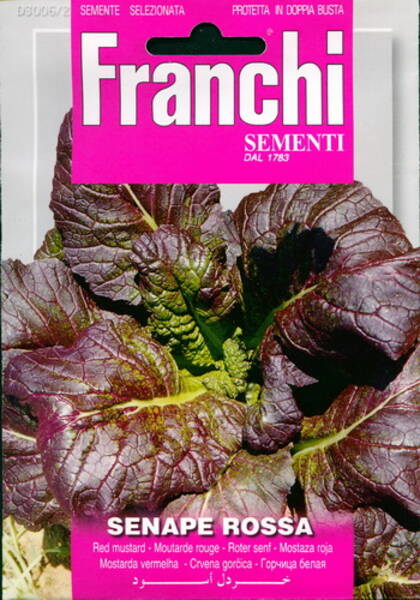For preparing piquant salads!
Annual, long-day green crop. Distinguished by early maturity and cold resistance. Leaves are large, green with a red tint.
Fresh mustard greens are rich in vitamins, ascorbic acid, mineral salts, and mustard oil, which gives the leaves a slightly pungent, piquant taste and a pleasant aroma.
Used for preparing salads, sandwiches, and garnishes for meat and fish dishes.
Growing conditions.
Sowing - in a permanent place.
The crop is undemanding to soil fertility. Can be grown in winter on a windowsill.
Sowing: April(3)-May(2,3).
Harvest: May(3)-September.
* Leaf mustard – a relative of cabbage, belongs to salad vegetable plants. Produces seeds in the year of sowing.
Grows on fertile and cultivated soils. Young leaves are picked for food until stems appear. Consumed fresh and boiled. Predecessors can be: cucumbers, tomatoes, onions, early potatoes.
Leaf mustard is grown both in open and protected ground; both in spring and summer; as a main crop and as an intercrop in cucumber or tomato plantings. However, high-quality produce can only be obtained by sowing either early in spring or late in summer (at the end of August). Summer-sown mustard quickly bolts (goes to flower) and forms few leaves, and those are usually small, coarse, with tough pubescence.
Leaf mustard produces excellent tender greens on moist soils well-fertilized with organic matter. With a lack of moisture, the leaves become coarse and tasteless. To obtain excellent greens for a long time, it is best to sow it in several terms, every 10-15 days. Mustard plants are small, they are placed according to the scheme 15-20 x 5-8 cm (80-100 plants per 1 m²). Seeds are embedded to a depth of 0.5-1.0 cm.












